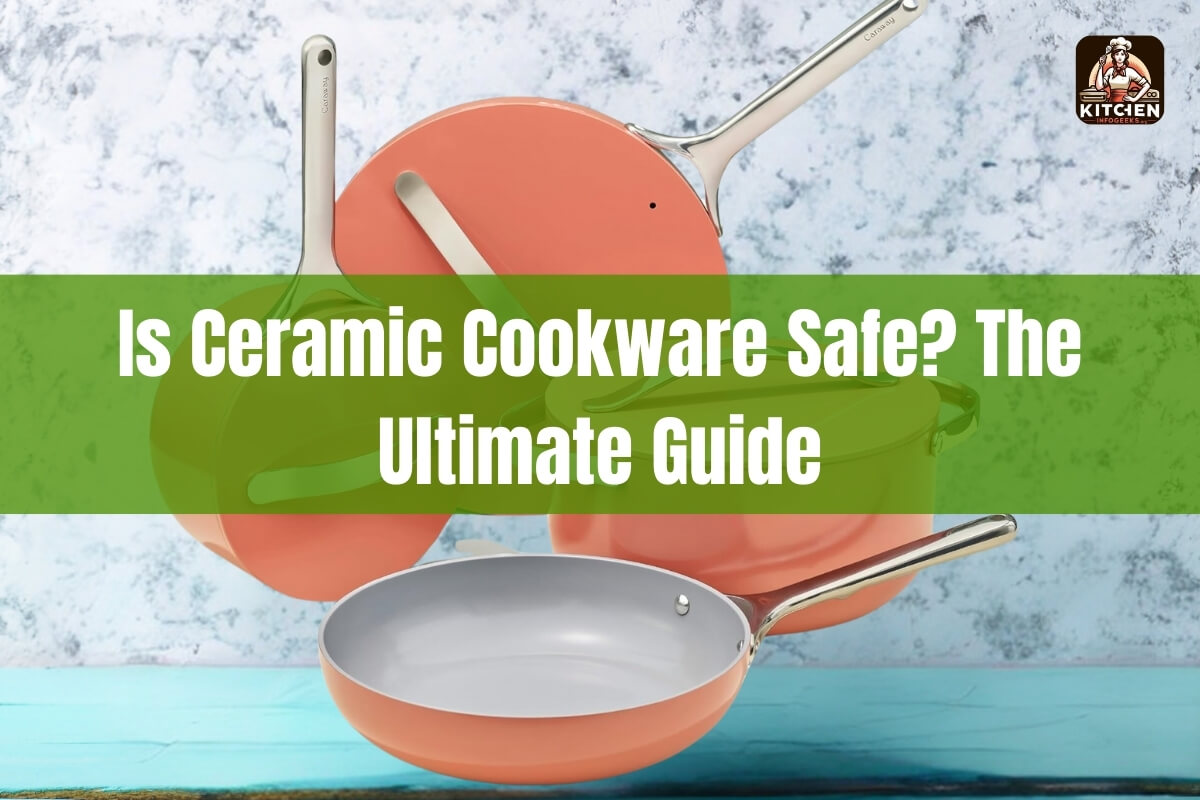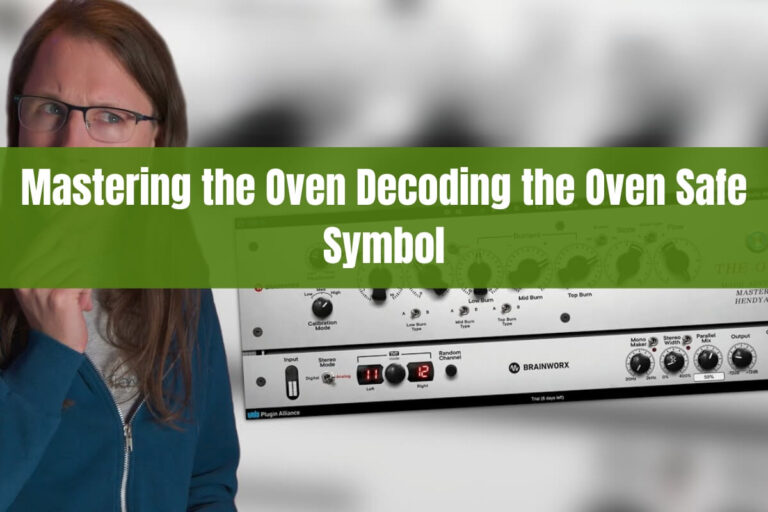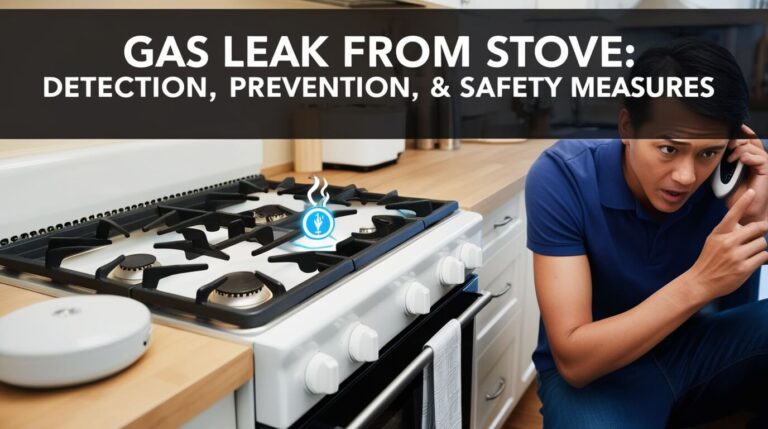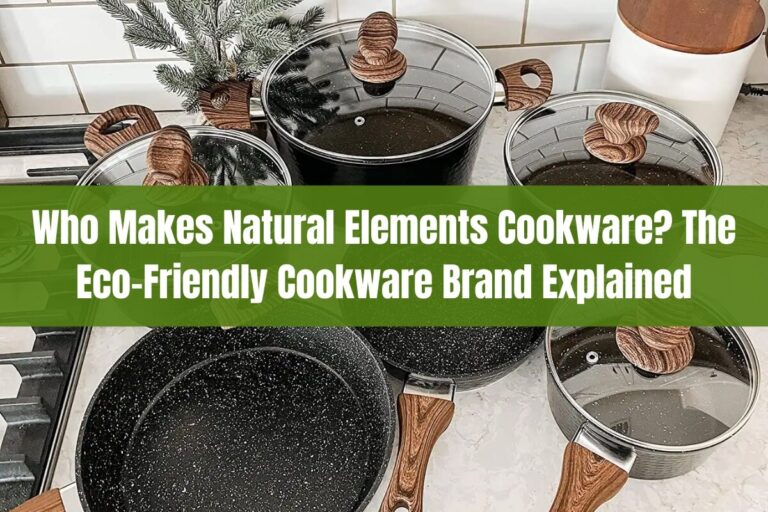
Are you concerned about the safety of your ceramic cookware? With the increasing popularity of ceramic pots, pans, and bakeware, it’s essential to understand the potential health risks associated with this type of cookware. In this comprehensive guide, we’ll dive deep into the question “is ceramic cookware safe?” and provide you with the ultimate answers.
Here’s what we’ll cover:
- What is ceramic cookware, and what are the different types?
- Potential health risks of using ceramic cookware, including nanoparticles, chemical coatings, and durability concerns.
- Factors to consider when choosing safe ceramic cookware brands and alternatives.
- Proper use and care guidelines to ensure the safety of your ceramic cookware.
- Frequently Asked Questions (FAQs) about ceramic cookware safety.
By the end of this guide, you’ll have a thorough understanding of the safety aspects of ceramic cookware and the knowledge to make informed decisions for your kitchen.
What is Ceramic Cookware?
Ceramic cookware is a type of non-stick cookware that features a ceramic coating on the surface. This coating provides a smooth, slick surface that prevents food from sticking and makes cleaning easier. Ceramic cookware comes in different variations:
- Pure Ceramic Cookware: Made entirely from ceramic materials without any additional coatings or glazes.
- Ceramic-Coated Cookware: Typically made of metal (such as aluminum or stainless steel) with a ceramic coating applied to the interior and exterior surfaces.
- Glazed Ceramic Cookware: Traditional ceramic or stoneware cookware with a glaze applied to the surface.
One of the primary benefits of ceramic cookware is its non-stick properties, which allow for healthier cooking with less oil or butter. Additionally, ceramic cookware is known for even heat distribution, making it suitable for various cooking methods.
Potential Health Risks of Ceramic Cookware
While ceramic cookware may seem like a safer alternative to traditional non-stick cookware, there are potential health risks to be aware of.
Nanoparticles in Ceramic Coatings
Many ceramic coatings contain nanoparticles, such as titanium dioxide nanoparticles, which can be released into food when the coating is scratched or damaged. These nanoparticles are incredibly small (1 to 100 nanometers in size) and can potentially enter bodily tissues or organs, leading to various health issues.
Animal studies have shown that ingesting titanium dioxide nanoparticles can cause harmful effects on male fertility, damage to the liver, testicles, heart, brain, kidneys, and alterations to the gut microbiome. However, there is a lack of human studies examining the ingestion of these nanoparticles, and safety data is limited.
It’s important to note that undamaged ceramic coatings are unlikely to release nanoparticles at typical cooking temperatures. However, any scratches or damage to the coating can lead to significant nanoparticle release.
Chemicals in Ceramic Coatings and Glazes
Some ceramic coatings and glazes may contain unknown or potentially harmful ingredients. While reputable brands typically use safe materials, there is a lack of transparency regarding the exact composition of these coatings and glazes.
Traditional glazed ceramic cookware, especially handmade or antique pieces, may contain lead or other heavy metals, which can leach into food and cause health problems.
Durability and Degradation Concerns
Ceramic coatings and glazes can break down over time, especially when subjected to high heat, abrasive cleaning, or improper use. As the coating degrades, it can release particles or chemicals into food, posing potential health risks.
It’s crucial to inspect your ceramic cookware regularly and replace any pieces that show signs of significant wear or damage to the coating or glaze.
Choosing Safe Ceramic Cookware
To ensure the safety of your ceramic cookware, consider the following factors when making a purchase:
Factors to Consider
- Reputable Brands: Choose ceramic cookware from well-known, reputable brands that adhere to safety standards and regulations.
- Certifications and Labels: Look for cookware with certifications or labels indicating it is free from harmful substances like lead, cadmium, or PFAS (per- and polyfluoroalkyl substances).
- Pure Ceramic or Uncoated Options: Consider pure ceramic cookware or uncoated stoneware options, as they may pose fewer risks than ceramic-coated or glazed pieces.
Safe Ceramic Cookware Brands
Here are some reputable ceramic cookware brands that prioritize safety:
- Caraway Home: Caraway’s ceramic cookware is free from PTFE, PFAS, lead, cadmium, and other toxic metals. Their non-stick coating is made from a mineral-based formula and is oven-safe up to 550°F.
- GreenPan: GreenPan’s Thermolon ceramic non-stick coating is free from PFAS, PFOA, lead, and cadmium. Their cookware is oven-safe up to 600°F.
- Xtrema: Xtrema offers pure ceramic cookware made from all-natural materials without any non-stick coatings or glazes.
Safe Cookware Alternatives
If you’re concerned about the potential risks of ceramic cookware, consider safer alternatives like:
- Stainless Steel: Durable, non-reactive, and easy to clean, stainless steel cookware is a safe and long-lasting option.
- Cast Iron: Cast iron cookware is naturally non-stick when properly seasoned and provides excellent heat retention and distribution.
- Enamel-Coated Cast Iron: Enameled cast iron combines the benefits of cast iron with a non-reactive, non-stick enamel coating.
Proper Use and Care of Ceramic Cookware
To ensure the safety and longevity of your ceramic cookware, follow these guidelines for proper use and care:
- Avoid High Heat: While ceramic cookware is generally oven-safe, excessive heat can cause the coating or glaze to break down. Follow the manufacturer’s recommendations for maximum oven temperatures.
- Use Appropriate Utensils: Avoid using metal utensils on ceramic cookware, as they can scratch the surface and cause the release of nanoparticles or coatings. Opt for silicone, wooden, or plastic utensils instead.
- Gentle Cleaning: Ceramic cookware should be hand-washed with mild soap and a soft sponge or cloth. Avoid abrasive cleaners or scrubbing pads that can damage the surface.
- Regular Inspection: Regularly inspect your ceramic cookware for any signs of scratches, chips, or wear on the coating or glaze. Replace any damaged pieces immediately.
By following these guidelines, you can extend the lifespan of your ceramic cookware and reduce the potential health risks associated with damaged or degraded surfaces.
FAQs About Ceramic Cookware Safety
Is ceramic cookware PFOA-free and PTFE-free?
Yes, most reputable ceramic cookware brands are free from PFOA (perfluorooctanoic acid) and PTFE (polytetrafluoroethylene), which are chemicals commonly found in traditional non-stick cookware. However, it’s essential to check the manufacturer’s specifications to ensure the ceramic cookware you’re purchasing is PFOA and PTFE-free.
Is ceramic cookware better than Teflon cookware?
Ceramic cookware is generally considered a safer alternative to Teflon (PTFE) cookware, as it does not release harmful fumes or chemicals at high temperatures. However, ceramic cookware still has potential risks, such as the release of nanoparticles and coating degradation over time.
How long does ceramic cookware last?
The lifespan of ceramic cookware can vary depending on the quality of the materials and how well it’s cared for. On average, high-quality ceramic cookware can last between 3 to 5 years with proper use and care. However, it’s essential to replace any pieces that show signs of significant wear or damage to the coating or glaze.
Can ceramic cookware be used on high heat?
Most ceramic cookware is oven-safe up to a certain temperature, typically around 400°F to 600°F (depending on the brand and materials). However, prolonged exposure to high heat can cause the ceramic coating or glaze to break down, potentially releasing harmful particles or chemicals into your food.
Is it safe to use ceramic cookware if the coating is scratched?
No, it’s not safe to use ceramic cookware if the coating is scratched or damaged. Scratches or cracks in the coating can cause the release of nanoparticles or other materials into your food, posing potential health risks.
When the ceramic coating is compromised, it becomes susceptible to releasing titanium dioxide nanoparticles, which have been linked to various health issues in animal studies. These nanoparticles can potentially enter bodily tissues or organs, leading to problems such as liver damage, reproductive issues, and alterations to the gut microbiome.
Additionally, a damaged coating can expose the underlying base material, which may contain metals or chemicals you don’t want leaching into your food. Even if the base material is safe, a compromised coating can make the surface more prone to sticking and challenging to clean effectively.
To ensure your safety, it’s crucial to inspect your ceramic cookware regularly and replace any pieces that show significant scratches, chips, or wear on the coating. While minor surface scratches may not pose an immediate risk, it’s best to err on the side of caution and avoid using damaged cookware altogether.
Remember, the non-stick and easy-to-clean properties of ceramic cookware rely heavily on the integrity of the coating. Once the coating is compromised, the cookware loses its primary benefits and can become a potential health hazard.






